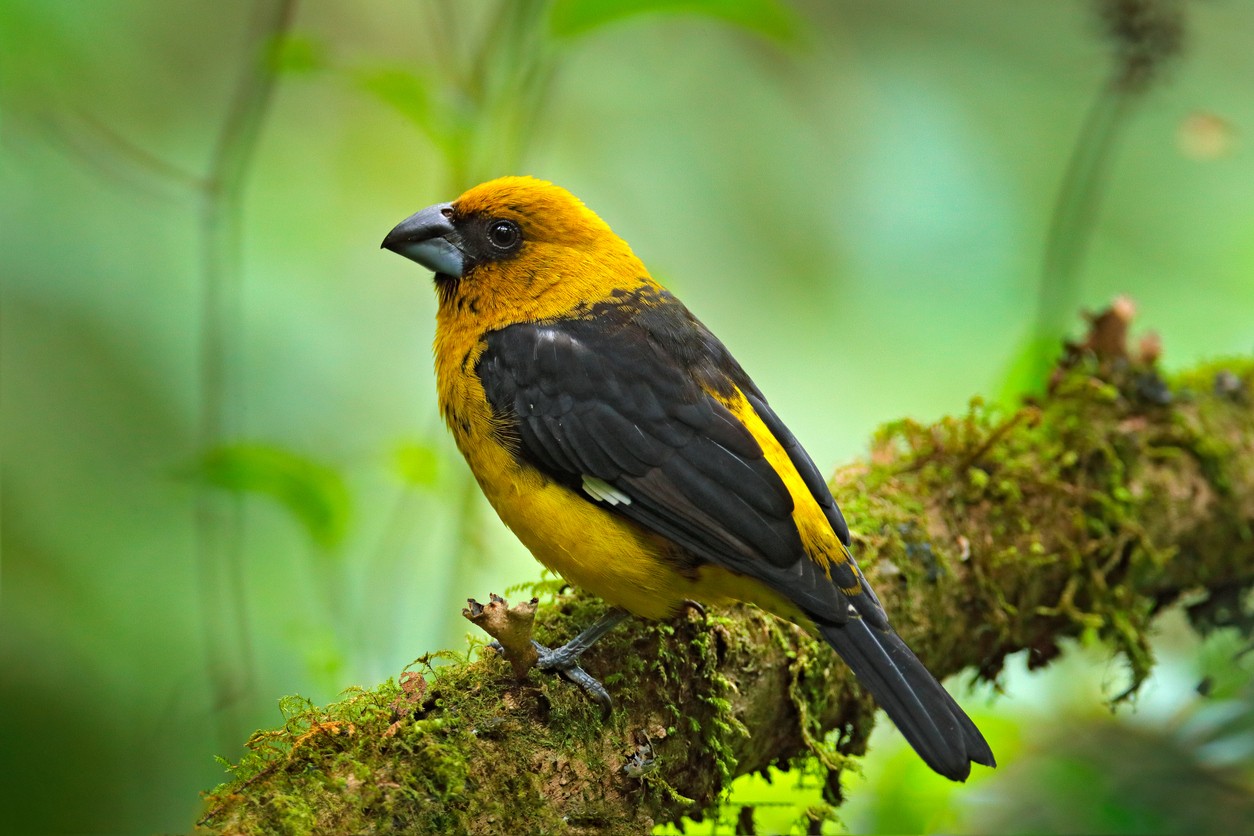Black-thighed Grosbeak
A species of Typical New World Grosbeaks Scientific name : Pheucticus tibialis Genus : Typical New World Grosbeaks
Black-thighed Grosbeak, A species of Typical New World Grosbeaks
Botanical name: Pheucticus tibialis
Genus: Typical New World Grosbeaks
Content
Description General Info

Description
The black-thighed grosbeak (Pheucticus tibialis) is a large seed-eating bird in the cardinal family, which is endemic to the mountains of Costa Rica and western Panama. This species breeds from about 1,000 m (3,300 ft) altitude (Pacific slope) or 1,500 m (4,900 ft) (Caribbean slope) up to 2,600 m (8,500 ft) and is found in canopy, woodland edge and semi-open habitats such as pasture with some trees. The nest is a thin cup constructed on a bulky twig base 1–3 m (3.3–9.8 ft) up in a small tree or amongst vines. The female lays two brown-spotted pale blue eggs between March and May. The adult black-thighed grosbeak is 20 cm (7.9 in) long, weighs 70 g (2.5 oz), and has a massive grey bill. The male has a yellow head, rump and underparts, an olive-edged black back, and black wings, thighs and tail. There is a white patch on the flight feathers. The female is paler with more olive on the back and a smaller white wing patch. Immatures are duller and more olive-tinged, and have streaking and mottling on the body plumage. The black-thighed grosbeak forages in shrubs or trees for insects, seeds and berries. The call is a sharp pink, and the song is a musical stream of warbles, whistles, trills and slurs. 
Size
20 cm
Nest Placement
Tree
Feeding Habits
Black-thighed Grosbeak primarily feeds on seeds, fruits, and invertebrates. Leveraging a strong bill, it cracks open seeds and peruses trees and shrubs for its varied diet. Unique adaptations include a preference for certain seeds during seasonal abundance.
Habitat
Black-thighed Grosbeak typically inhabits forested regions, favoring environments that include forest edges, clearings, and pastures dotted with trees. They are predominantly found in mid to high elevation areas of Central America, ranging roughly from 750 meters above sea level up to 2600 meters, with some variance across different slopes and regions.
Dite type
Granivorous
General Info
Feeding Habits
Bird food type

